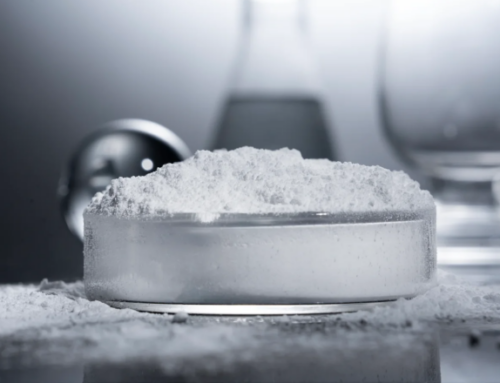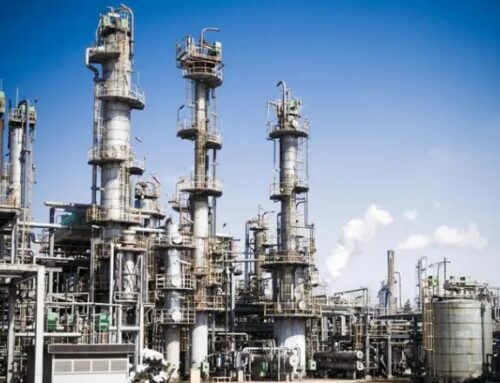In the vast field of polymer materials, the role of additives is crucial. They are like heroes behind the scenes, silently endowing polymer materials with various excellent properties and driving the continuous progress of materials science.

1.Plasticizer: endows materials with flexibility
Plasticizers are a type of additive widely used in polymer materials. Its main function is to increase the plasticity of polymers, reduce their hardness and brittleness, and improve the flexibility and processability of materials. Common plasticizers include phthalates, aliphatic dicarboxylic acid esters, phosphate esters, etc.

Phthalate plasticizers are currently the most widely used type of plasticizer. For example, in polyvinyl chloride (PVC) products, dioctyl phthalate (DOP) is often widely used. The insulation layer of PVC pipes, wires and cables can be made softer, easier to bend and process by adding DOP. However, phthalate plasticizers also pose some potential health and environmental risks, and have received increasing attention in recent years. Studies have shown that long-term exposure to certain phthalates may interfere with the human endocrine system and affect reproductive health.
Aliphatic binary ester plasticizers have low toxicity and good biodegradability, making them a relatively environmentally friendly plasticizer. In some fields with high environmental requirements, such as food packaging materials, fatty acid ester plasticizers such as dioctyl adipate (DOA) are widely used. The use of plasticizers in products such as food wrap and plastic tableware can reduce potential harm to food and the environment while ensuring material flexibility.
Phosphate ester plasticizers have good flame retardant properties and also have a certain plasticizing effect. In some polymer materials that require flame retardancy, such as wires and cables, building materials, etc., they have important applications. For example, in some high-end wire and cable sheath materials, triphenylphosphate (TCP) can improve the flame retardant performance of the material, while giving the material a certain degree of flexibility, ensuring the safety and reliability of the wire and cable during use.
2.Antioxidants: Delaying material aging
Antioxidants are another important type of polymer material additives. Their main function is to inhibit or delay the oxidative aging of polymer materials during processing, storage, and use. Common antioxidants include phenolic antioxidants, amine antioxidants, thioester antioxidants, etc.

Phenolic antioxidants are widely used antioxidants with excellent antioxidant properties and thermal stability. For example, hindered phenolic antioxidants such as antioxidant 1010 are often added to plastics such as polyethylene (PE) and polypropylene (PP). These plastics are susceptible to oxidative aging caused by oxygen in the air during processing and use, leading to material brittleness, discoloration, and other issues. After adding antioxidant 1010, it can effectively capture free radicals, prevent oxidation reactions, and extend the service life of polymer materials.
Amine antioxidants have strong antioxidant capacity, but due to their dark color and easy contamination of materials, their application in some fields with high color requirements is limited. However, in some special occasions, such as rubber products, amine antioxidants still have important applications. For example, adding certain amine antioxidants to tire rubber can improve its aging resistance and extend the service life of the tire.
Thioester antioxidants have good synergistic effects and are often used in combination with phenolic or amine antioxidants to enhance their antioxidant properties. In some engineering plastics, such as polycarbonate (PC), polyamide (PA), etc., phenolic antioxidants and thioester antioxidants are often used simultaneously. This can fully leverage the advantages of different antioxidants and better protect polymer materials from the effects of oxidative aging.
3.Light stabilizer: protects materials from photo aging
Polymer materials used outdoors, such as plastic films, plastic pipes, etc., are prone to photoaging due to exposure to ultraviolet radiation. The function of light stabilizers is to protect polymer materials from UV damage and extend their service life. Common light stabilizers include ultraviolet absorbers, light shielding agents, free radical scavengers, etc.

UV absorbers can absorb ultraviolet radiation and convert it into harmless thermal energy or low-energy radiation, thereby protecting polymer materials from UV damage. For example, in polyethylene film, adding ultraviolet absorbers such as benzophenone compounds can effectively absorb ultraviolet radiation and prevent the film from aging and becoming brittle under sunlight. This polyethylene film treated with ultraviolet absorbers is widely used in fields such as agricultural greenhouses and packaging materials.
Light shielding agents form a shielding layer on the surface of materials to block ultraviolet radiation and protect the interior of the material from the effects of ultraviolet radiation. In some polymer materials with high appearance requirements, such as automotive coatings, plastic shells, etc., light shielding agents such as nano titanium dioxide are often added. These light shielding agents can form a uniform protective film on the surface of the material, effectively blocking the invasion of ultraviolet rays, while also improving the material’s weather resistance and glossiness.
Free radical scavengers can capture free radicals generated under ultraviolet irradiation, preventing the progress of photoaging reactions. In some high-performance polymer materials, such as polyetheretherketone (PEEK), polyphenylene sulfide (PPS), etc., free radical scavengers are often added. These materials are susceptible to attacks from ultraviolet radiation and free radicals when used in harsh environments such as high temperature and pressure. Adding free radical scavengers can effectively improve the stability and durability of materials.
4.Flame retardant: improve the flame retardant performance of materials
With the increasing demand for safety performance, the application of flame retardants in polymer materials is becoming more and more widespread. The function of flame retardants is to improve the flame retardancy of polymer materials, making them less prone to combustion or slowing down their combustion rate when exposed to a fire source. Common flame retardants include halogen flame retardants, phosphorus flame retardants, nitrogen flame retardants, etc.

Halogen flame retardants are a traditional type of flame retardant with excellent flame retardant properties. For example, in some electronic and electrical products, such as TV casings, computer monitors, etc., brominated flame retardants are often added. If a fire occurs during the use of these products, halogenated flame retardants can quickly take effect and prevent the spread of the fire. However, halogenated flame retardants can produce toxic smoke during combustion, posing a threat to the environment and human health. Therefore, in recent years, the application of halogenated flame retardants has been somewhat limited.
Phosphorus based flame retardants have the characteristics of low toxicity and high efficiency, making them a relatively environmentally friendly flame retardant. It has a wide range of applications in fields that require high environmental protection, such as electronics and automotive interiors. For example, in some high-end car seat materials, adding phosphorus based flame retardants can improve the flame retardant performance of the material without producing toxic smoke. In addition, phosphorus based flame retardants can also be used in combination with other flame retardants to improve their flame retardant effect.
Nitrogen based flame retardants have the characteristics of being non-toxic and pollution-free, but their flame retardant effect is relatively weak, and they are often used in combination with other flame retardants. Nitrogen based flame retardants have certain applications in areas with high environmental requirements, such as children’s toys and food packaging. For example, adding nitrogen based flame retardants to some children’s toys can ensure their safety during use, and even in the event of a fire, it will not cause serious harm to children.
There are many types of polymer material additives, each with its unique role and application field. In practical applications, it is necessary to select appropriate types and amounts of additives based on the performance requirements and usage environment of polymer materials to achieve the best results. At the same time, with the continuous advancement of technology and the increasing demand for environmental protection and safety performance, polymer material additives are also constantly innovating and developing, providing broader prospects for the application of polymer materials.
Article source: www.xianjichina.com
M&J International Trading Co., Ltd





